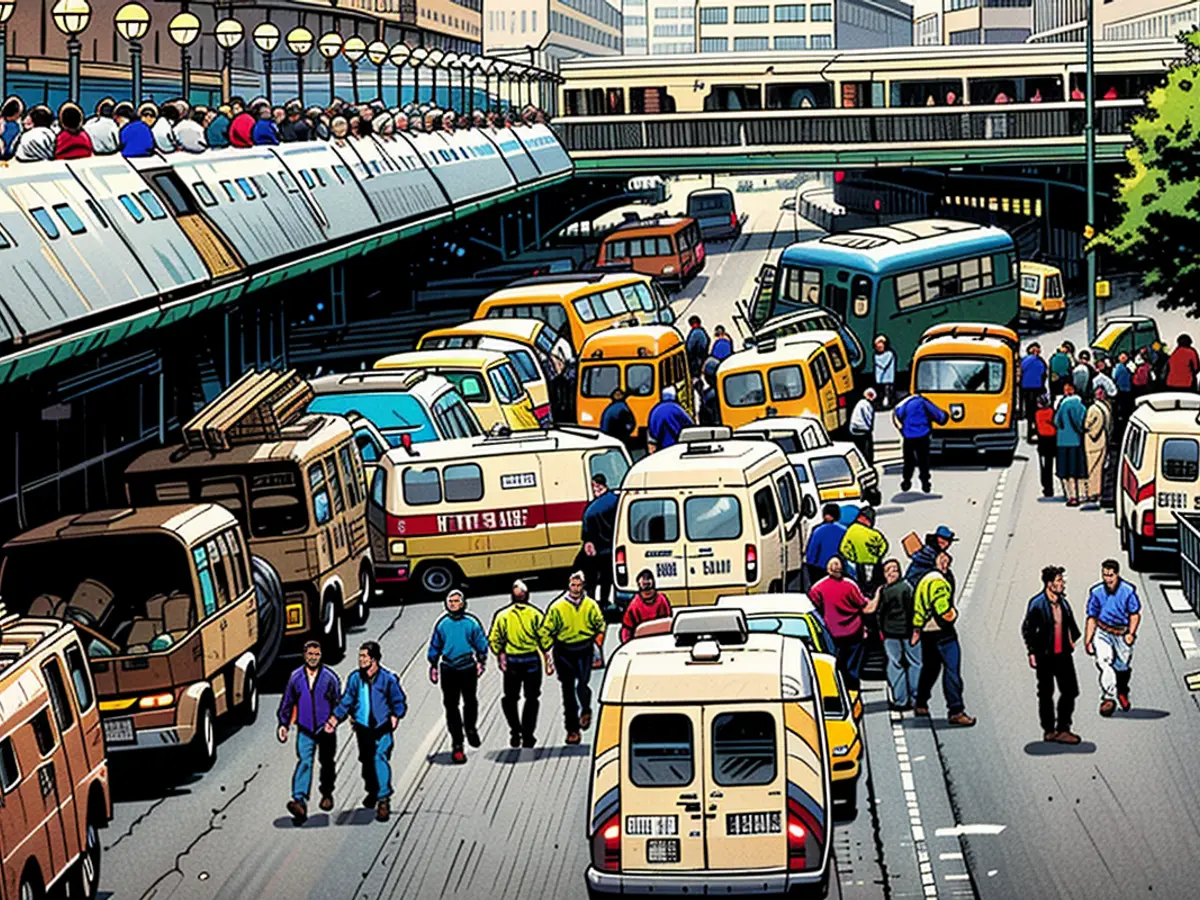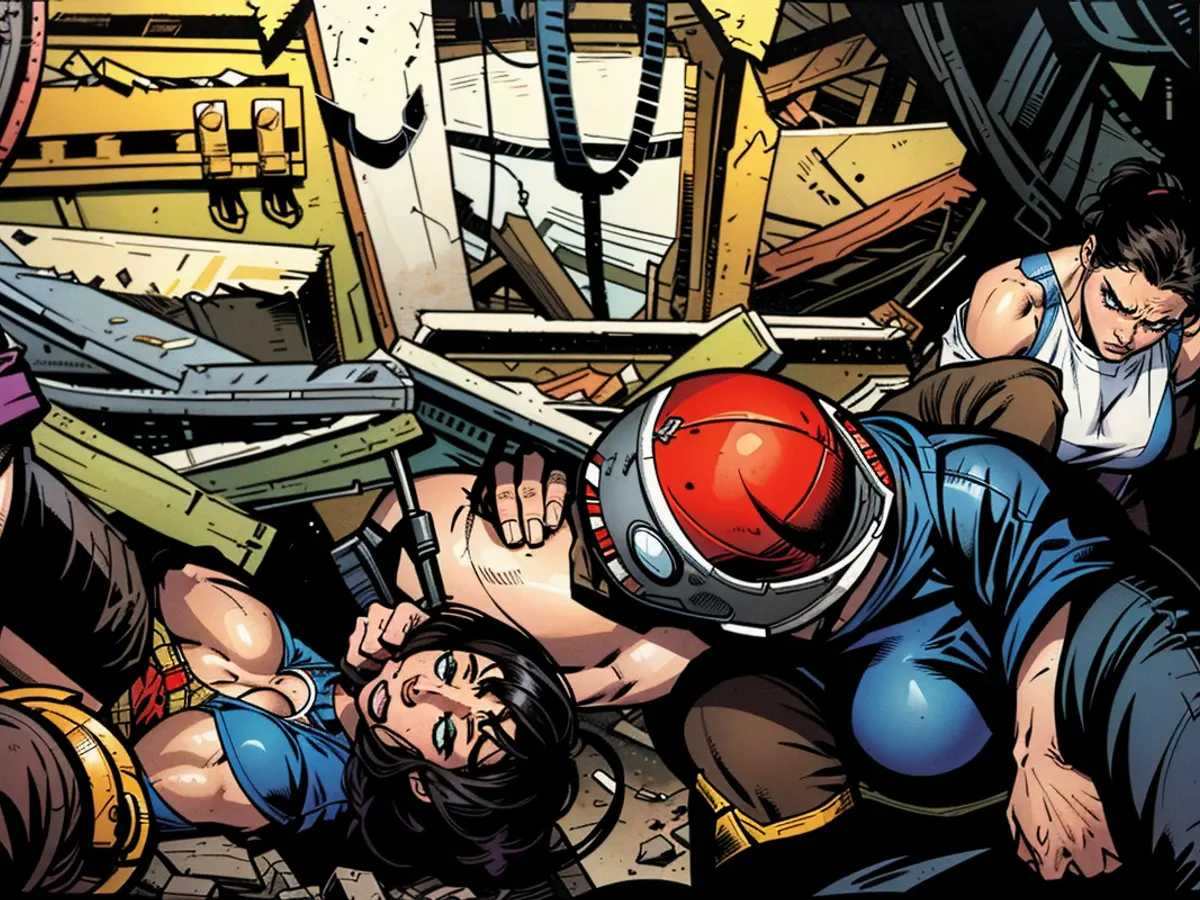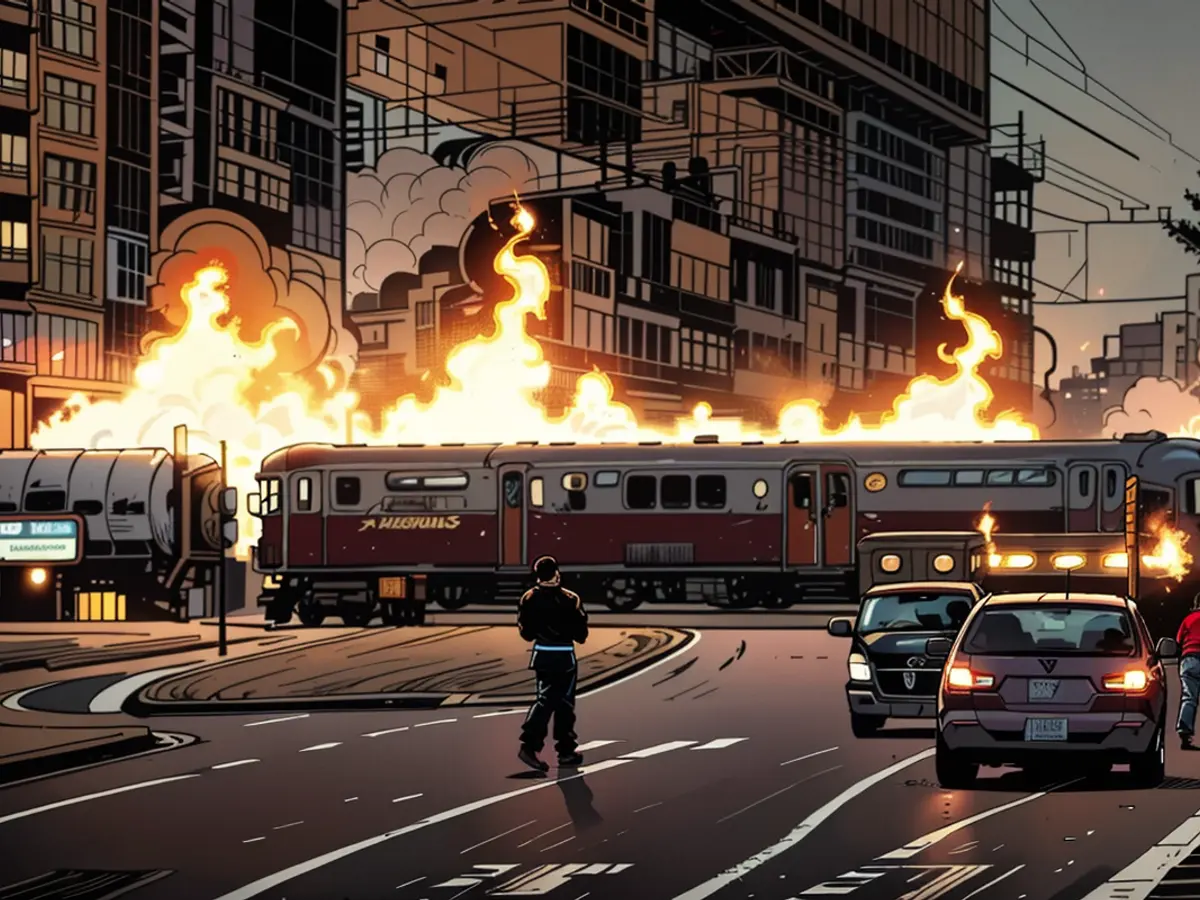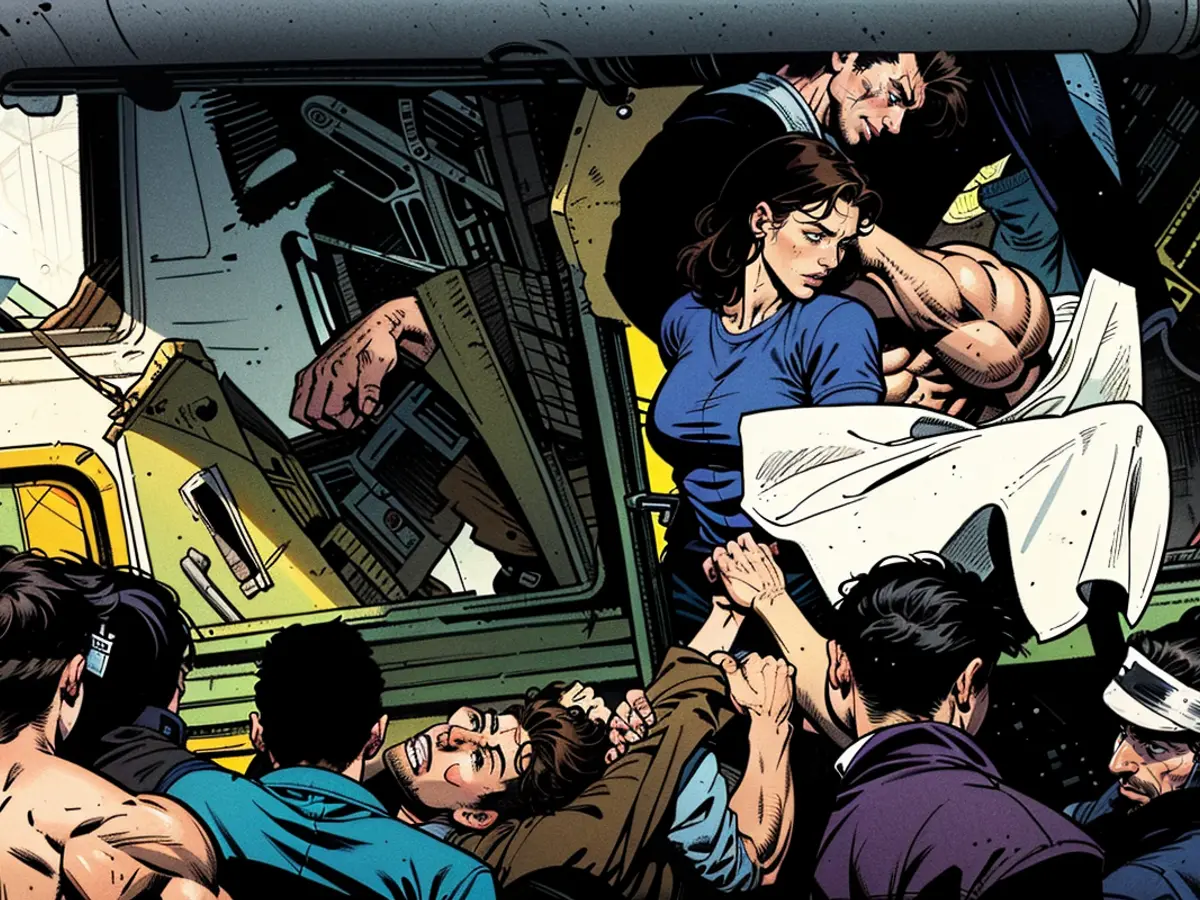36 years ago today - "Stop everything, I have no brakes": The dramatic seconds before the Paris train crash
It is a quiet summer evening when disaster strikes Gare de Lyon train station in Paris in the form of commuter train number 153951. The train is en route from Melun, a city about 50 kilometers south-east of Paris. The journey to the historic terminus in the French capital usually takes only 40 minutes. But on that day, there is a delay. Ten kilometers before Paris, a young mother suddenly pulls the emergency brake. She had not realized that the train, due to the new summer timetable, was not stopping at Le Vert de Maisons station as usual. There, she intended to get off to pick up her children from school on time. When the train stops, she quickly gets off and runs away.
The 42-year-old locomotive driver must now turn off the alarm and release the brakes. These function through a compressed air system that connects all eight carriages together. He contacts the control center via radio about the incident. Then, along with the train conductor, he sets about solving the problem. To reactivate the emergency brake, he must move a small lever between the first two carriages. However, this lever jams, so he leans on the compressed air vent for support and accidentally shuts it. From then on, the last seven carriages are disconnected from the braking system.
Locomotive driver believes in "airlock" – a costly mistake
But that's not all. When the lever for the brake line is set to "off," a safety mechanism is triggered. This mechanism prevents the brakes from functioning again after the emergency brake is activated to prevent the train from moving without compressed air in the braking system.
The locomotive driver, however, suspects an "airlock" – a common railway problem where the air pressure in the braking system is too high after the emergency brake has been applied. Fearing further delay, he calls no technician for help but decides to solve the problem himself. He gets off and manually releases the air in each of the seven carriages. Although the brakes are now free, he has also released the valuable residual air from the system and disabled the safety system. Without compressed air, all train brakes except those in the locomotive are out of order. Only the brakes in the locomotive function, which is why the measuring instruments in the driver's cab still show normal values.
The train has already spent 26 minutes waiting due to the unexpected stoppage. Many passengers have already disembarked to continue their journey with other means of transport. The train dispatcher instructs the locomotive driver to bypass the next stop and head straight to Gare de Lyon without stopping. Had the failure of the brakes been noticed at Maisons Alfort station, about seven kilometers before Paris, the disaster could have been prevented.
A fully loaded train waits at the Paris station

At Gare de Lyon station, Train Number 153951 for Melun is still on Platform 2 because the conductor was late that day. More and more people are boarding and pushing themselves in the waiting line of the train.
"The train was full. And due to the hot weather, the air was very stuffy," recalls a passenger in a TV documentary. Luckily for her, she no longer wanted to wait. She gets off. An event that later saved her life.
The track before Gare de Lyon has a strong smell, causing the train driver from the oncoming train to be signaled to initiate the braking process. But when he pulls the brakes, they hardly respond. The 300-ton train is racing towards the station out of control. The desperate train driver calls for the conductor to look for an emergency handbrake. Around 7 pm, the train driver sends an alert to the control center. "Stop everything, I have no brakes," he reports.
He activates the emergency alarm signal, which goes off in the control center and in the driver's cabs of all trains nearby. Immediately, all signals are changed from green to red, and the drivers stop their trains wherever they are. The entire system comes to a standstill within seconds. In his panic, he forgets that the train is also equipped with electrical brakes. However, the drivers rarely use them because their use along with the air brakes can lock the wheels. He also forgets to give his name and position when calling the control center, causing another problem: The responsible parties cannot manually redirect the train to a free track.
Normally, the trains are automatically directed to free tracks. This happens through a corresponding programming. But the driver's emergency call disables the automatic track switching. This is supposed to allow the switch operators in Paris to have full manual control over the rail network in case of danger. But now, the runaway train remains on its track – the same track where the waiting train for Melun is also located.
Passengers prepare for collision in the last carriage

The train driver rushes to the passengers and brings them to the last carriage of the train, where they prepare for the collision. The switch operators in Paris see the train out of control passing by. Through the intercom of the station, they urge the passengers to exit immediately. The passengers rush to the doors. The train driver also warns his passengers. Instead of ensuring their safety, he stays in his position until the collision, using his announcements to save as many passengers as possible. Then, the massive train hits the locomotive cabin with around 70 ton-miles per hour and burrows into several carriages.
Six minutes after the accident, the first emergency responders appear at Gare de Lyon. Over 300 people will be involved in the rescue efforts in the following hours. They are met with a scene of horror. "It was terrible," recalls a doctor. "Bodies were hanging out of the windows. We saw beheaded people and those who had lost their arms or legs. It was worse than in humanitarian aid missions in war zones." Due to the extremely violent collision, passengers were partially severed from their limbs by iron parts of the interlocking train cars. Many of the injured could only be saved through amputation. Witnesses describe a "scene of horror" at the accident site.
The train cars are jammed together so tightly that the rescue efforts are very difficult. Debris piles up to the ceiling of the train station. A young girl, discovered shortly after the collision, spends nine hours trapped in the wreckage with full consciousness.
By noon the next day, only dead bodies are being recovered from the debris. A total of 56 people die in the accident. 57 more are injured.
The locomotive driver is first sentenced to four years in prison for negligent manslaughter in the trial. However, the sentence is reduced in the second instance to six months on probation. The train conductor is acquitted in the second instance, and the woman who pulled the emergency brake receives a fine.
The state railway company SNCF changes its safety regulations following the tragedy. Communication systems allow passengers to contact the train driver. The old emergency brake system is replaced. In an emergency, only the train driver can activate the brakes. Additionally, the training of train drivers is improved and the radio system is modernized.

*You can see in the video: Unnerving sight in Canadian London: Several train cars of a freight train are on fire. Bystanders film the scenes – no one was injured in the incident.
- Headlines across the World highlight the train crash in Paris, with Train Number 153951 from Melun being the focus, causing numerous casualties.
- The incident at Gare de Lyon train station in Paris becomes the top news, with reports of a train crash involving Engine driver and Locomotive driver, resulting in a significant number of injuries and fatalities.
- In Paris, the train crash at Gare de Lyon train station becomes a major headline, with the young mother's action and the Engine driver's subsequent mistakes leading to a disaster, involving Train attendant and many passengers.
- France is left in shock following the train crash in Paris, with Gare de Lyon train station being the scene of the tragedy involving Train Number 153951, killing 56 people and injuring 57 others, making it the top news in Headlines globally.
Read also:
- Fear of escalation in the Middle East: US Secretary of State Blinken travels to the region again
- Government circles: US Secretary of State Blinken to travel to Middle East again
- Bridging days 2024: How you can double your vacation this year
- Germany has wanderlust: how tour operators and airlines are looking ahead to the next travel year








